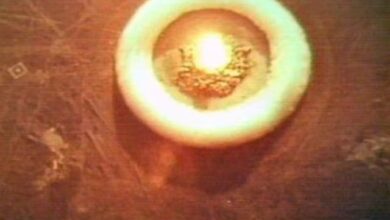‘Time Dilation’ in the Early Universe Revealed by Ferocious Black Holes
As great minds like scientist Albert Einstein and, well, fictional time traveler Dr. Who obviously recognized, time is a fickle thing. In a 2007 episode of the British science fiction series, the latter correctly characterized time as “wibbly wobbly.” In a paper released on Monday, researchers once again proved the case for “time dilation” in the early universe by using measurements of a terrifying type of black holes known as quasars to explain how time moved then just slightly faster than it does now. The observations span back 12.3 billion years, or nearly a tenth of the age of the universe today.
The research employed quasars, which are among the brightest objects in the cosmos, as a “clock” to estimate time in the distant past. Supermassive black holes known as quasars, which are millions to billions of times more massive than our sun and often found at the cores of galaxies, are very active. A bright disk of matter spins around them as they consume everything brought to them by their powerful gravitational attraction and release torrents of radiation, including jets of high-energy particles.
The observations, which included 190 quasars in different parts of the universe, were made roughly 1.5 billion years after the Big Bang event that created the universe. They determined that certain oscillations that occur in a certain period of time now did so five times more slowly in the oldest quasars by comparing the brightness of these quasars at different wavelengths to that of quasars that are currently known.
Time and space are interconnected, and the universe has been expanding since the Big Bang, according to Einstein’s general theory of relativity.
The study’s primary author, Australian astrophysicist Geraint Lewis of the University of Sydney, said that the universe’s ongoing expansion explains why time moved more slowly in the past than it does now.
It’s not like everything was moving slowly. A second would still seem like a second to you if you could go back in time. However, from the viewpoint of someone living now, a second from the past would occur in five seconds.
Lewis said that “time is a complicated thing in modern physics.” “Dr. Who was correct; that period may best be characterized as ‘wibbly-wobbly, timey-wimey crap.’ This implies that we are still learning about time and its limitations, and theories like time travel and warp drives are still a possibility. Though it may not be, the future might be incredibly fascinating.
Because light travels across space slowly, scientists can peek back in time by observing distant objects.
Based on studies of star explosions known as supernovas, scientists have already shown that time dilation began about 7 billion years ago. They analyzed similar explosions in the past, ones that occurred at enormous distances from Earth, and discovered that these events unfolded more slowly than from our time perspective. They already knew how long it takes for today’s supernovas to brighten and fade.
Individual stars can be used to investigate the early cosmos, but beyond a certain distance, they cannot be used to see the explosion of stars. Due to their extreme brightness, quasars can be seen all the way back in the early phases of the cosmos.
“The quasar brightness is what is seen throughout time. This varies up and down as a consequence of complex physics occurring in the disk of stuff rotating at practically light speed around a black hole. This brightness fluctuation is not just a simple bright, fade, brilliant, fade. It resembles the stock market more, Lewis said, with small-scale jitters on longer-term movements and occasional abrupt swings.
The time scale for when the fluctuations typically exhibit a certain statistical attribute is included in the statistical properties of the light variations. And it is this that we utilize to determine each quasar’s ticking time, said Lewis.







